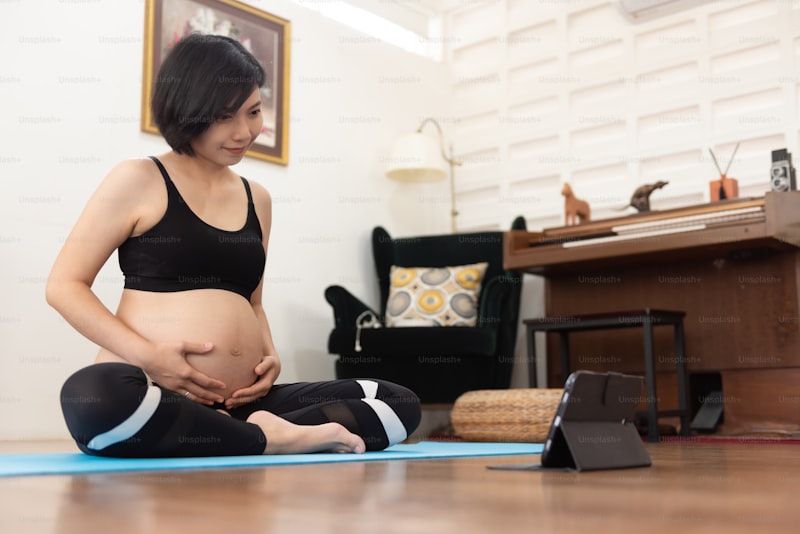Ask almost any woman who’s ever been carried a child before, pregnancy is not a comfortable process. Backache, heartburn, indigestion, leg cramps, piles, varicose veins, fatigue – the list goes on and on. Most of us have experienced at least one of the “common” forms of pregnancy pain. Some, unfortunately, get to know the list in detail.
Being plagued with one or more of the above while pregnant feels more like enduring an Iron-Woman-Runs-Across-Very-Wild-Mountains Marathon rather than just having, say, a bit of a cold. Fortunately, a holistic approach (including yoga) can go a long way to appeasing these.
The Umbrella Term: What Is PPGP?
PPGP or Pregnancy-Related Pelvic Girdle Pain is an umbrella term – mind you, it’s a big umbrella, suitable for British weather. Have I mentioned that modern pregnancy is riddled with acronyms yet? PPGP used to be called SPD (symphysis pubis dysfunction) in the past and it relates to the health of your pelvis. Here are some of the common symptoms:
- Pain at the front of your pubic bone, around the lower back and in the perineum/groin.
- There’s a grinding sensation in your pelvis.
- There’s a radiating painful sensation down the thighs.
- You experience pain when walking, using stairs, getting into the car, standing asymmetrically or spreading the legs apart.
While PPGP is not harmful to the baby, it will impede your mobility. If diagnosed and treated early on, these symptoms may disappear completely or at least be effectively managed and minimised.
What’s interesting to note is that it’s most commonly observed in mums with poor posture, hyper-mobility of joints and previous history of this issue. In 2009, Birthlight published a study suggesting that long periods of sitting combined with bouts of intensive exercises may be to blame. Keep in mind that it’s important to consult a GP in order to differentiate PPGP from sciatica, which may or may not be present, too.
The Heroes of Pregnancy Pain
Physiotherapy, osteopathy and manual therapy are popular choices to treat PPGP. Strengthening the pelvic floor, exercising in water, pain relief strategies like acupuncture and working within a pain-free range of movement are usually advised. Common-sense decisions, like wearing flat comfortable shoes and using a backpack instead of a heavy tote will also be helpful. Another great idea would be to look into womb wrapping.
Womb wrapping can be done during pregnancy and after the birth of your baby (it could even be helpful to do when you are back on your menstrual cycle later on). The wrap supports your round ligaments, abdominal and back muscles. It allows a more even distribution of weight, which is helpful with PPGP.
It’s common for women suffering from PPGP to feel a powerful sense of disempowerment. The syndrome can distract from and overwhelm the joys of pregnancy, since it’s difficult not to focus on the pain and discomfort. Pain and anxiety go hand-in-hand. Inability to do the simplest things, like putting your jeans on without pain, is also really difficult to accept so staying active is vital.
How Your Practice Can Help
Yoga seems like a counter-intuitive choice, but actually it’s great to attend a prenatal class if your pelvis and mind are in pain. Prenatal classes are designed to gently tone and strengthen your pelvic floor, while keeping you within a pain-free range of movement. The breathing exercises not only help calm the mind, but also work on the deep layers of your skeletal muscles, and you’ll still get all the mindfulness and body awareness benefits of your regular practice.
The first thing to do if you’re attending any class to assist with pain, is to inform the teacher. Any good teacher will then assist you in reaping the benefits of the class without hurting yourself. For example, in the case of PPGP you should avoid wide-legged stances, deep lunges and asymmetrical positions. You should never experience pain in a prenatal class. Regular practice will strengthen not only your pelvic muscles but also your confidence in the body. There is a host of poses that you could perform. Always keep your mind open and be ready to experiment.
|
|
Keep Calm and Make Friends
Anxiety and feelings of isolation frequently accompanies pain in pregnancy, including PPGP. You can feel robbed of your independence and borne down by pain. Remember, you are not the only one. Statistically, as many as 1 in 5 mums suffer from the PPGP alone in the UK. Websites such as Netmums or local community centres can often act as a directory for Mum-To-Be Meetups.
Above all, do not be afraid of your own body. Keep moving every day. Be mindful, aware and active for you and your baby. Go to a class: yoga, meditation, prenatal art or anything pregnancy related that takes your fancy. If you need any information or support you can always consider contacting your local NCT representative.













